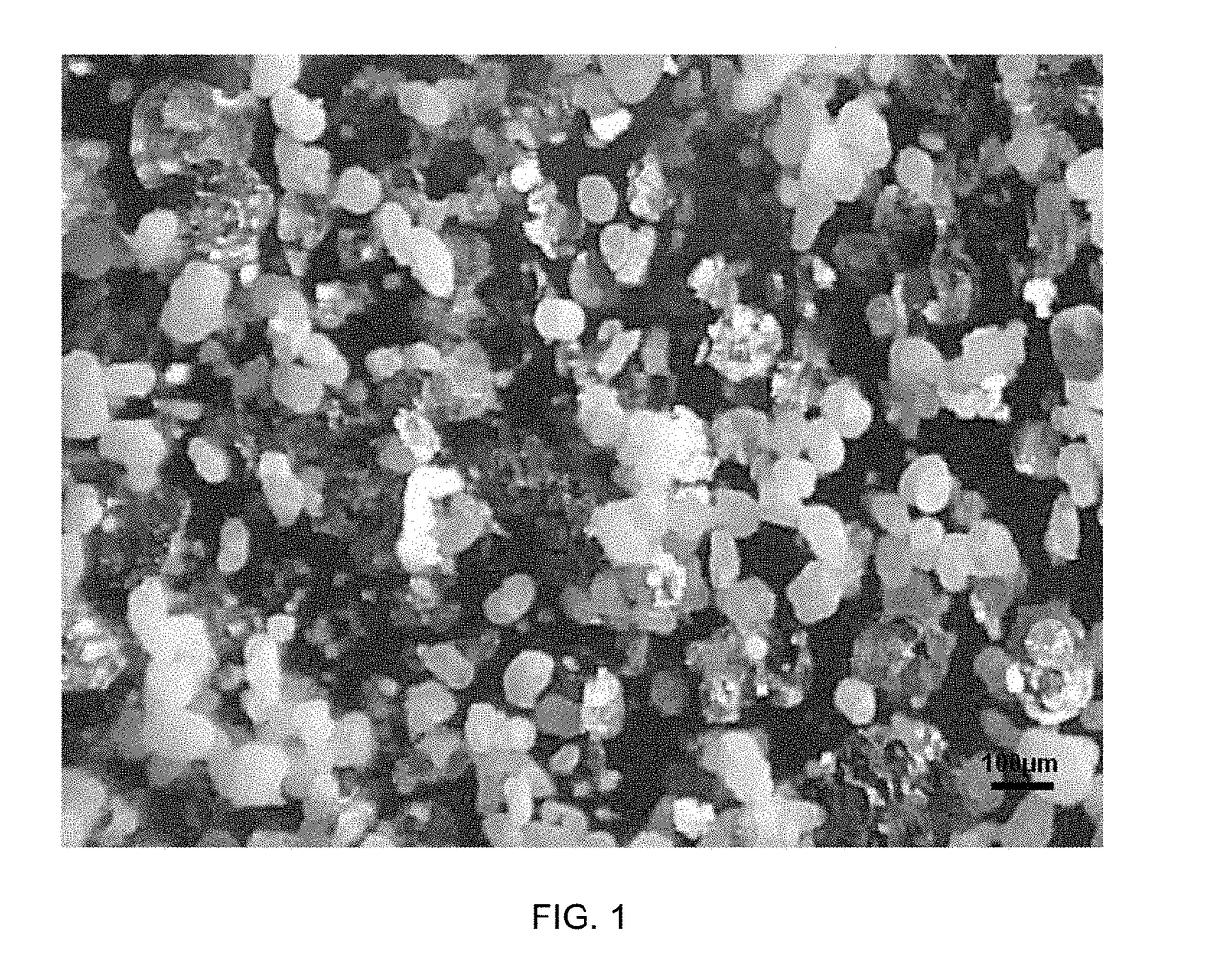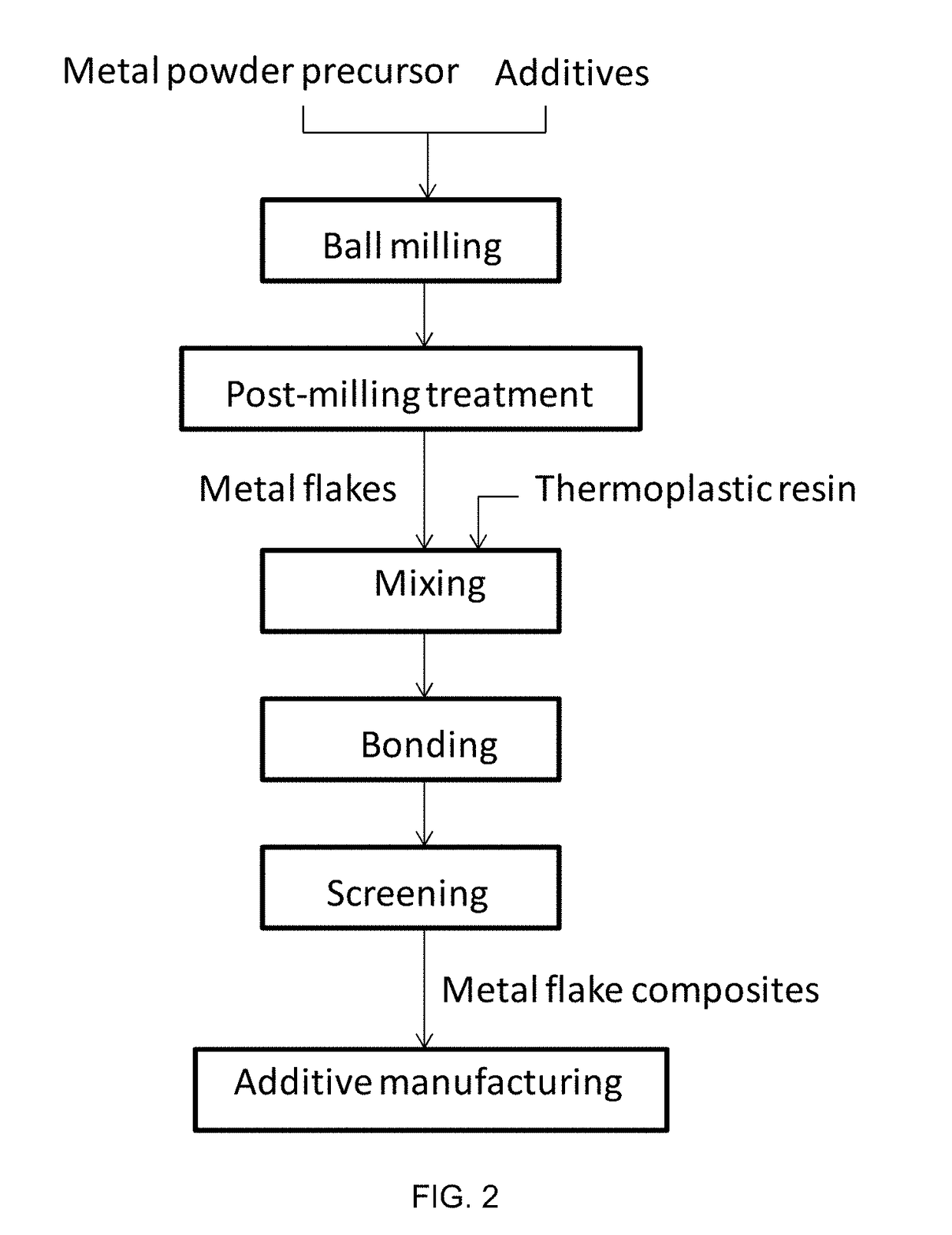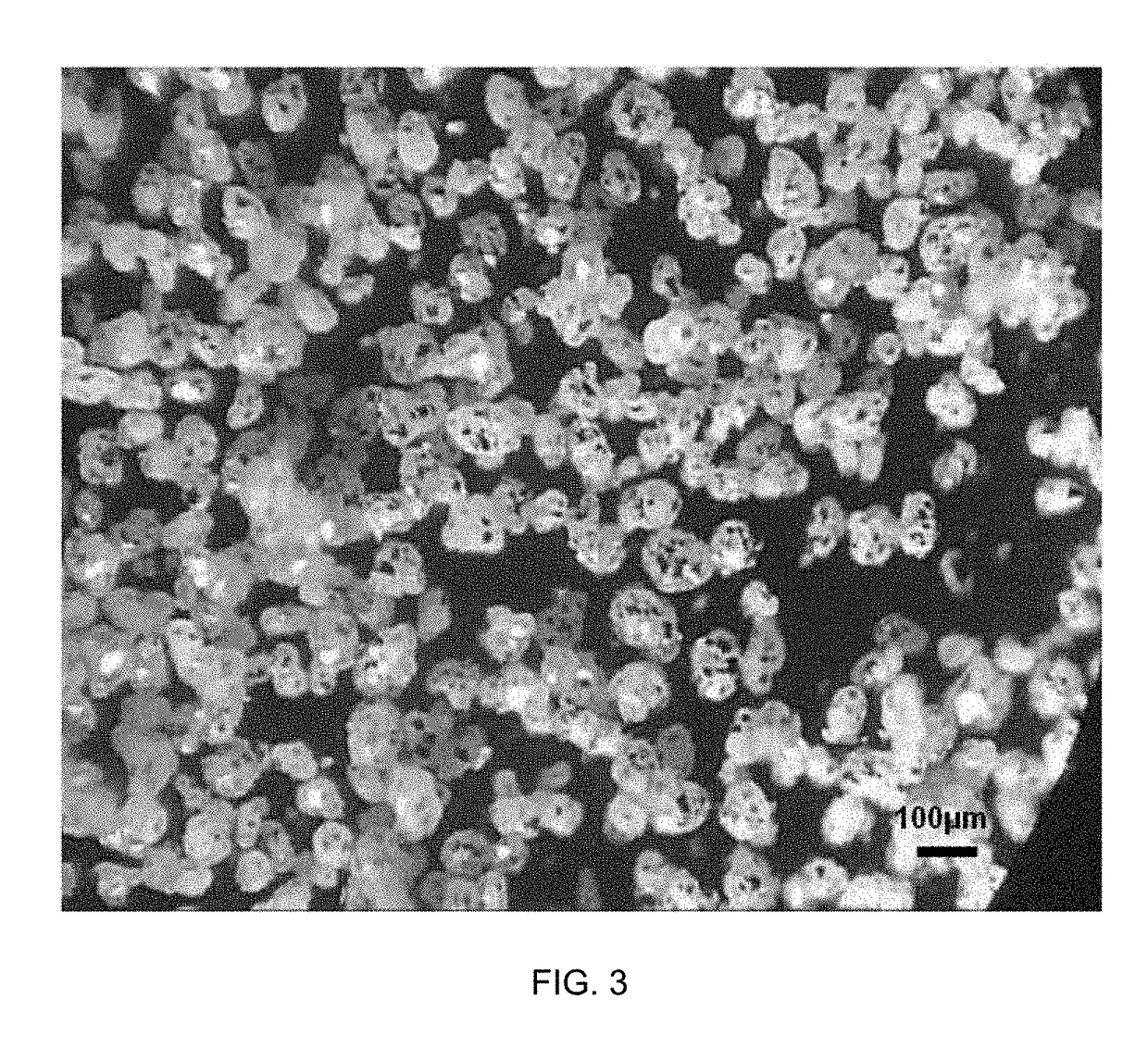Metal Flake Composites and Methods of Making and Using the Same for Additive Manufacturing
a technology of metal flake composites and additive manufacturing, which is applied in the direction of resistance welding apparatus, electron beam welding apparatus, chemical/physical processes, etc., can solve the problems of low printing resolution, visible seam lines, and possible delamination, and achieve the effect of improving mechanical properties and durability
- Summary
- Abstract
- Description
- Claims
- Application Information
AI Technical Summary
Benefits of technology
Problems solved by technology
Method used
Image
Examples
example 1
[0049]Nickel flakes were made by ball-milling carbonyl nickel powder N24 (Jinchuan Group) in a lab ball mill. High chrome steel balls of ¼″ diameter were used with a ball to metal powder volume ratio of 40:1. Odorless mineral spirits (Recochem) was used as the solvent, and stearic acid was used as a lubricant. Solvent to powder volume ratio was controlled at 40:1, and the lubricant content in metal powder was 0.5 wt %. Ball milling was carried out at 45 rpm for 3 hours with close monitoring of the milling jar temperature. After milling, the solvent was decanted and the resultant nickel flakes are dried at 60° C. under vacuum. The as-produced nickel flakes exhibited metallic luster appearance. Typical properties of the produced nickel flakes are listed in Table 1.
[0050]The aforementioned nickel flake powder was mixed with Nylon 12 resin powder (50-60 microns size D50) in 30 wt % with a V-cone blender, conditioned ready for SLS 3D printing. Test bars were made at simulated 3D printing...
example 3
[0054]Aluminum flakes were made by ball-milling aluminum powder (EMD Chemicals) in a lab ball mill. High chrome steel balls of ¼″ diameter were used with a ball to metal powder volume ratio of 20:1. Odorless mineral spirits (Recochem) was used as the solvent, and stearic acid was used as a lubricant. Ball milling was carried out at 30 rpm for 60 min with close monitoring of the milling jar temperature. After milling, the solvent was decanted and the resultant aluminum flakes were dried at 60° C. in atmosphere. Aluminum flakes with metallic shine effect were thus produced. Typical properties of the produced aluminum flakes are listed in Table 1.
[0055]The aforementioned aluminum flake powder was ball-milled with Nylon 12 (EOS PA2200) resin powder (50-60 microns size) in 10 wt % in a lab ball mill with 4 mm high chrome steel balls for 30 min at 60 rpm. After milling, the composite powder was heated to 120° C. for 30 min to soften the resin powder and allow the aluminum flake to adhere ...
example 4
[0056]A ball milled bronze flake powder (copper-tin powder) was dry blended with Nylon 12 (EOS PA2200) resin powder (50-60 microns size) in 5 wt % in a V-cone blender for 30 min at 60 rpm. After blending, the composite powder was heated to 120° C. for 30 min to soften the resin powder and allow the bronze flake to adhere to the outer surface of the resin as a bonding process, conditioned ready for SLS 3D printing. Table 2 lists typical properties of bronze flake composite powders. SLS 3D printing using 5 wt % bronze flake / Nylon 12 composite material produced 3D parts with over 10% density increase in comparison with parts printed with the base′ Nylon 12 resin.
TABLE 2Bronze flake composite powder propertiesPropertyTypical rangeUnitTest methodCompositionNylon 1290-98wt %LecoBronze flake 2-10wt %ICP-MSLubricant0.1-0.5wt %LecoMean particle size D5040-60micronImage analysisMelting point (polymer)180-185° C.ElectrothermalApparent density0.5-0.9g / cm3CarneyColorBeige-tan N / AVisual inspecti...
PUM
| Property | Measurement | Unit |
|---|---|---|
| size | aaaaa | aaaaa |
| size | aaaaa | aaaaa |
| thickness | aaaaa | aaaaa |
Abstract
Description
Claims
Application Information
 Login to View More
Login to View More - R&D
- Intellectual Property
- Life Sciences
- Materials
- Tech Scout
- Unparalleled Data Quality
- Higher Quality Content
- 60% Fewer Hallucinations
Browse by: Latest US Patents, China's latest patents, Technical Efficacy Thesaurus, Application Domain, Technology Topic, Popular Technical Reports.
© 2025 PatSnap. All rights reserved.Legal|Privacy policy|Modern Slavery Act Transparency Statement|Sitemap|About US| Contact US: help@patsnap.com



